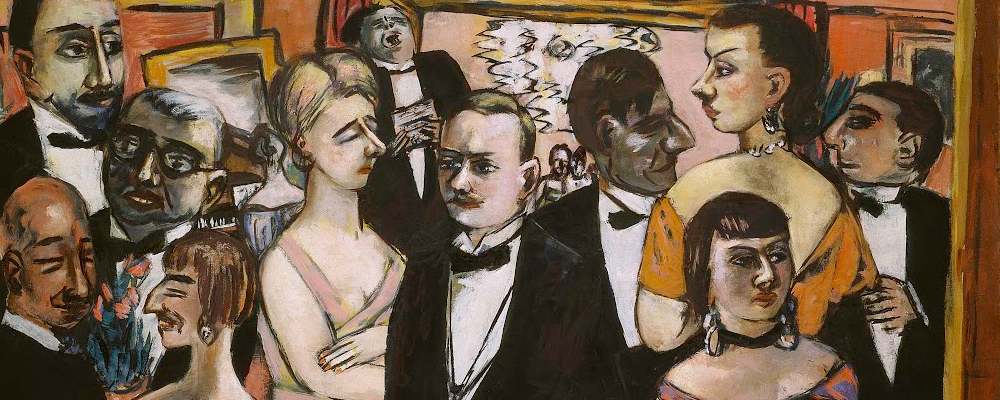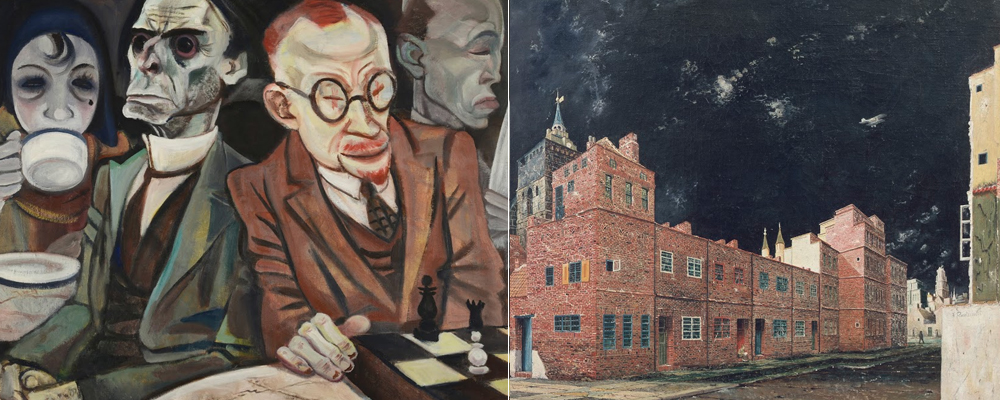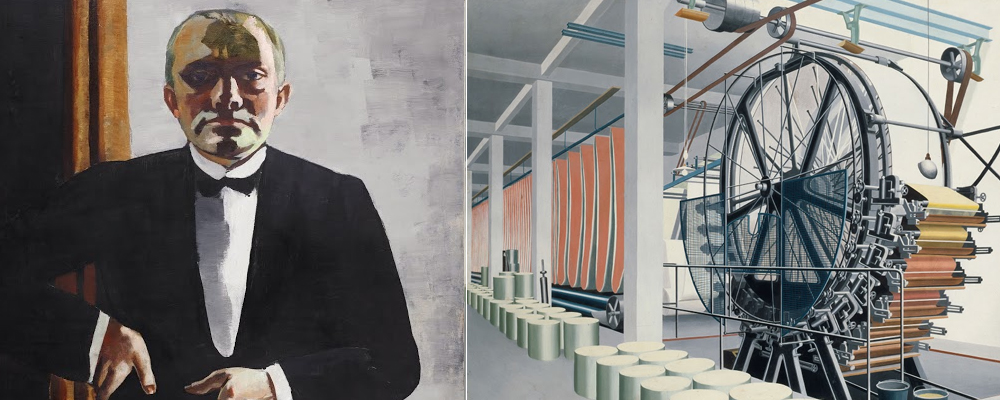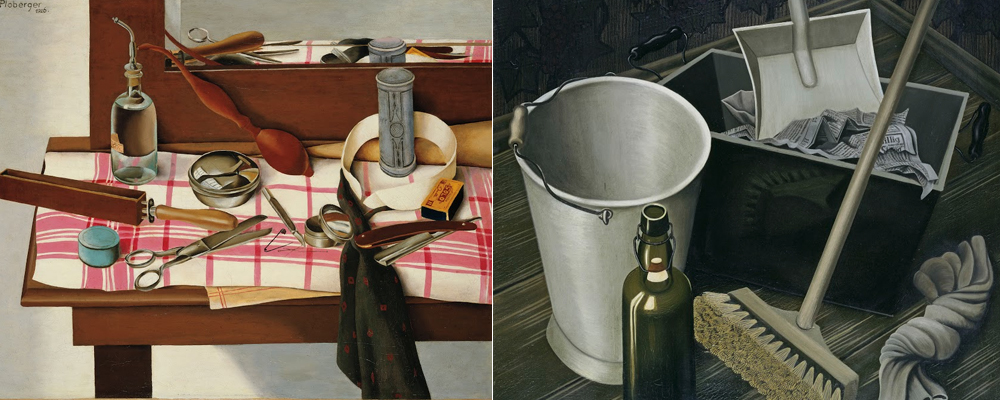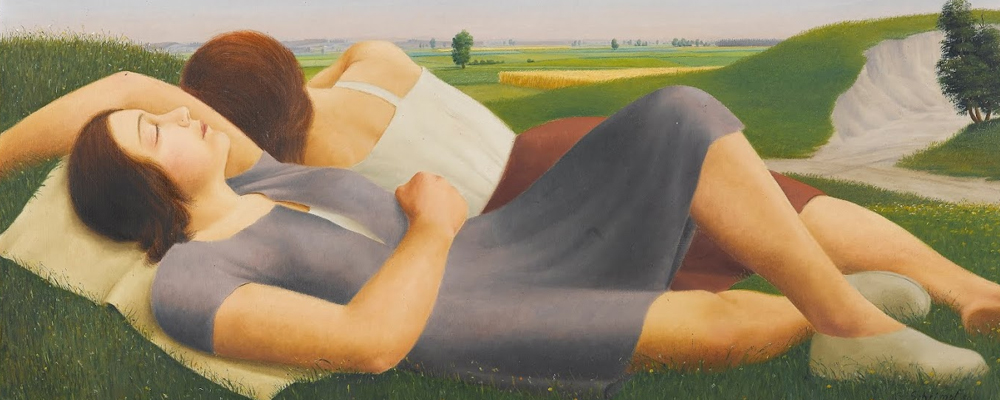Mass Industry Meets Social Realism in LACMA’s Weimar Republic Exhibit
Lucy Tiven
Now on view at LACMA, “New Objectivity: Modern German Art in the Weimar Republic” leads us through the end of German expressionism and into a new era of social realism in German art.
Characterized by mass industrialization and social upheaval in equal measure, Weimar, Germany saw the rise of transformative Bauhaus architecture and a return to figural painting as artists struggled to invoke a nation deeply traumatized by the first World War.
“New Objectivity” spans mediums from painting and photography to video while works dwell primarily in Germany’s harsh social spheres and its cold fields of industry. Factories cast sterile light over the German landscape, its inhabitants isolated by machinery and linked solely by their shared apprehension of economic and moral decay.
While artists like Max Beckmann depict perturbed social life in discordant taverns filled with crippled war veterans and grotesque prostitutes, violence enters domestic space even more acutely in Weimar paintings of Lustmord, or sexual murder.
LACMA curator Stephanie Barron attributes the distinct “steely-eyed gaze” of Weimar art to its dual apprehension of psychic violence and modernity. “It’s a kind of unflinching look that tries to remove the pathos and the emotion of expressionism,” says Barron, deeming its cold narration “a mechanism to deal with the horrors and the aftermath of the war.”
Throughout the exhibition, social drama is set in stark contrast to the emergent military-industrial machinery of progress. Works such as Karl Völker’s “Picture of Industry” look to contemporaneous Bauhaus architecture to render the shrewd geometry of mass production and its increasingly alienated human inhabitants. The pristine cityscapes of signage in “New Objectivity” are displayed adjacent to political cartoons of wounded soldiers and overworked, industrial peasants linking economic, political and social histories of the Weimar era.
Spanning from 1918 to 1933, the exhibition offers us a harrowing glimpse into the emergence of industry, modernism and the German State, and is a must-see on this winter’s LA museum circuit.
“New Objectivity: Modern German Art in the Weimar Republic” will be on display at LACMA until Jan. 13, 2016.

